Groups joined
Discussions started
Discussion Comments
Resources added
Stephanie O'Donnell added a new Career Opportunity - "Climate Storytelling from the Global South" to Climate Change
Stephanie O'Donnell added a new Event - "AI + Environment Summit" to AI for Conservation
Stephanie O'Donnell added a new Event - "Biodiversity modelling in the AI era" to AI for Conservation
Stephanie O'Donnell added a new External Link - "Soundscapes and deep learning enable tracking biodiversity recovery in tropical forests" to Acoustics
Stephanie O'Donnell added a new Career Opportunity - "ZSL Research Fellow (x3 roles)" to AI for Conservation
Stephanie O'Donnell added a new External Link - "Pre-register for the Basics of R for Ecologists" to Data management and processing tools
Stephanie O'Donnell contributed to Organisation - "The BioAcoustic AI Consortium "
Stephanie O'Donnell added a new Organisation - "The BioAcoustic AI Consortium "
Stephanie O'Donnell added a new Career Opportunity - "PhD Opportunity: YELLOWHAMMER - Individual acoustic monitoring to study song culture evolutionwithin and between dialect areas" to Acoustics
Stephanie O'Donnell added a new Career Opportunity - "PhD Opportunity: Distributed sound source localisation and separation for wireless microphone networks consisting of two-microphone nodes" to Acoustics
Stephanie O'Donnell added a new Career Opportunity - "PhD Opportunity: 'FLOATERS' position at Bioacoustic AI Doctoral Network" to Acoustics
Stephanie O'Donnell added a new External Link - "Shedding light on nocturnal behavior: A cost-effective solution for remote, infrared video recording in the field" to Camera Traps
Stephanie O'Donnell added a new External Link - "Correspondence among multiple methods provides confidence when measuring marine protected area effects for species and assemblages" to Camera Traps
Stephanie O'Donnell added a new External Link - "Marine Flyways - Seabird Tracking Database" to Animal Movement
Stephanie O'Donnell added a new Discussion - " Is there a good resource for learning bird calls?" to Acoustics
Stephanie O'Donnell added a new Event - "Catch up with The Variety Hour: October 2023" to AI for Conservation
Stephanie O'Donnell added a new Career Opportunity - "Working Student (m/f/d) GIS & RS Monitoring of Biodiversity & Agroecology in Africa & Asia" to Geospatial
Stephanie O'Donnell added a new Discussion - "Project Update: Improving satellite ear tag transmitters for Polar Bears" to Animal Movement
Stephanie O'Donnell added a new Discussion - "Discover Digital Earth Africa" to East Africa Community
Stephanie O'Donnell added a new Discussion - "How 3D Technologies are Reshaping Forest Ecology and Conservation" to Climate Change
Stephanie O'Donnell added a new Discussion - "Unravelling freshwater turtle activity with an open source, low-cost accelerometer" to Animal Movement
Stephanie O'Donnell contributed to R&D Project - "Counting Elephants from Space"
Stephanie O'Donnell added a new Event - "How to Cover Conservation Technology | Mongabay Webinars" to Emerging Tech
Stephanie O'Donnell added a new Article - "Leaf Litter Tech Issue: WILDLABS Spotlight" to Acoustics
Stephanie O'Donnell added a new Article - "IUCN and AI2 to provide AI technology at no cost to fast-track implementation of newly signed UN High Seas Treaty" to AI for Conservation
Stephanie O'Donnell added a new Event - "Catch up with The Variety Hour: September 2023" to Acoustics
Groups
Group
- Latest Discussion
- How has the Funding & Finance group done?
- Latest Resource
- /
- AI for Conservation Office Hours: 2025 Review
Read about the advice provided by AI specialists in AI Conservation Office Hours 2025 earlier this year and reflect on how this helped projects so far.
Group
- Latest Discussion
- Apis Nomadica Labs: Mobile Bee-Search for the Future of Food & Medicine
- Latest Resource
- /
- Zimbabwe Shines: 5 Key Takeaways from Ramsar COP15
Making waves in wetland conservation: Explore the outcomes and insights from Ramsar COP15, a premier global event on wetland protection and sustainability
Group
- Latest Resource
- /
- AI for Conservation Office Hours: 2025 Review
Read about the advice provided by AI specialists in AI Conservation Office Hours 2025 earlier this year and reflect on how this helped projects so far.
Group
- Latest Discussion
- New Group Proposal: Systems Builders & PACIM Designers
- Latest Resource
- /
- Population genetics with eDNA
Using SNP markers with an Amphibian species, we were able to identify a total of 17,617 nuclear single nuclear polymorphisms shared across individual, pond eDNA (4 populations) and tank eDNA samples (where tadpoles of the four ponds were housed), enabling us to detect genetic structuring across sampling locations (previously demenstrated with microsatellites and tissue samples), consistent with individual-based estimates. Collecting only the matrix (here water) allows describing the existing population structure...that could be a nice progress for conservation biology...
Group
- Latest Discussion
- Apis Nomadica Labs: Mobile Bee-Search for the Future of Food & Medicine
- Latest Resource
- /
- Siguiendo Ballenas: rastreo satelital desde el espacio revela sus rutas migratorias // Tracking right whales from outer space reveals their migratory routes
Un ambicioso proyecto internacional está usando transmisores satelitales para monitorear los viajes migratorios de ballenas francas australes, permitiendo entender sus sorprendentes patrones de desplazamiento en tiempo real. // An ambitious international project is using satellite tags to monitor the migratory journeys of southern right whales, allowing researchers to understand their surprising movement patterns in real time.
Group
- Latest Discussion
- G-DiNC 2026: Global Drones in Nature Conservation Symposium & Expo
- Latest Resource
- /
- BoutScout – Beyond AI for Images, Detecting Avian Behaviour with Sensors
In this case, you’ll explore how the BoutScout project is improving avian behavioural research through deep learning—without relying on images or video. By combining dataloggers, open-source hardware, and a powerful BiLSTM deep learning model trained on temperature data, the team has reduced the time needed to analyse weeks or even months of incubation behaviour to just seconds. This has enabled the discovery of new patterns in how tropical birds incubate their eggs across different elevations and climates. With tools soon to be released on PyPI, including a no-code platform for behavioural analysis, this work offers a fresh, scalable approach for conservationists and researchers working on breeding data at the tropics.
Group
- Latest Discussion
- Piloting a QGIS Course for Conservation Staff – Seeking Interest & Input
Please help us by participating in a MSc research project on what you consider to be 'evidence' in your work in conservation.
Group
- Latest Discussion
- Beyond the Tech Hype / Más Allá del Hype Tecnológico
Please help us by participating in a MSc research project on what you consider to be 'evidence' in your work in conservation.
Group
- Latest Discussion
- Graph of life platform
This is a chance to participate in a short survey about the preferences that conservation practitioners have for evidence. There's a chance to win one of three £20 Mastercard gift cards.
Group
- Latest Resource
- /
- Nature Tech for Biodiversity Sector Map launched!
Conservation International is proud to announce the launch of the Nature Tech for Biodiversity Sector Map, developed in partnership with the Nature Tech Collective!
Group
- Latest Discussion
- Suggestions for research funds
- Latest Resource
- /
- AI for Conservation Office Hours: 2025 Review
Read about the advice provided by AI specialists in AI Conservation Office Hours 2025 earlier this year and reflect on how this helped projects so far.
Group
- Latest Discussion
- G-DiNC 2026: Global Drones in Nature Conservation Symposium & Expo
- Latest Resource
- /
- Siguiendo Ballenas: rastreo satelital desde el espacio revela sus rutas migratorias // Tracking right whales from outer space reveals their migratory routes
Un ambicioso proyecto internacional está usando transmisores satelitales para monitorear los viajes migratorios de ballenas francas australes, permitiendo entender sus sorprendentes patrones de desplazamiento en tiempo real. // An ambitious international project is using satellite tags to monitor the migratory journeys of southern right whales, allowing researchers to understand their surprising movement patterns in real time.
Group
- Latest Discussion
- Do dogs influence small mammal trapping success rates?
Scientists at Victoria's Healesville Sanctuary are using trained sniffer dogs on paddleboards to track and identify platypuses in their habitat.
Group
- Latest Discussion
- Free online tool to analyze wildlife images
- Latest Resource
- /
- AI for Conservation Office Hours: 2025 Review
Read about the advice provided by AI specialists in AI Conservation Office Hours 2025 earlier this year and reflect on how this helped projects so far.
Group
- Latest Discussion
- Free online tool to analyze wildlife images
- Latest Resource
- /
- IUCN Red list R client.
Everything you need on the IUCN Red list is now accessible from R, outputted as tibble to facilitate data query, analysis, and visualization.
Group
- Latest Discussion
- Online Ocean-Focused GIS Course
- Latest Resource
- /
- AI for Conservation Office Hours: 2025 Review
Read about the advice provided by AI specialists in AI Conservation Office Hours 2025 earlier this year and reflect on how this helped projects so far.
Group
- Latest Discussion
- AI accelerator for nonprofits working in the Climate area
- Latest Resource
- /
- Case Study: Drone-based radio-tracking of Eastern Bandicoots
Wildlife Drones was deployed by Zoos Victoria in a trial project tracking captive-bred Eastern Barred Bandicoots that were tagged and released into the wild
Group
- Latest Resource
- /
- BoutScout – Beyond AI for Images, Detecting Avian Behaviour with Sensors
In this case, you’ll explore how the BoutScout project is improving avian behavioural research through deep learning—without relying on images or video. By combining dataloggers, open-source hardware, and a powerful BiLSTM deep learning model trained on temperature data, the team has reduced the time needed to analyse weeks or even months of incubation behaviour to just seconds. This has enabled the discovery of new patterns in how tropical birds incubate their eggs across different elevations and climates. With tools soon to be released on PyPI, including a no-code platform for behavioural analysis, this work offers a fresh, scalable approach for conservationists and researchers working on breeding data at the tropics.
Group
- Latest Discussion
- Online Ocean-Focused GIS Course
This is a chance to participate in a short survey about the preferences that conservation practitioners have for evidence. There's a chance to win one of three £20 Mastercard gift cards.
Group
- Latest Resource
- /
- New WILDLABS Funding & Finance group
WildLabs will soon launch a 'Funding and Finance' group. What would be your wish list for such a group? Would you be interested in co-managing or otherwise helping out?
Group
- Latest Discussion
- DIY: Pressure Chamber
- Latest Resource
- /
- Can CBIs promote coexistence? A Case Study from Northern Tanzania
Can conservation-based incentives promote the willingness of local communities to coexist with wildlife? A case of Burunge Wildlife Management Area, Northern Tanzania
Group
- Latest Discussion
- GIS and AI on deforestation and Climate Change
- Latest Resource
- /
- Zimbabwe Shines: 5 Key Takeaways from Ramsar COP15
Making waves in wetland conservation: Explore the outcomes and insights from Ramsar COP15, a premier global event on wetland protection and sustainability
Group
- Latest Discussion
- Free online tool to analyze wildlife images
- Latest Resource
- /
- IUCN Red list R client.
Everything you need on the IUCN Red list is now accessible from R, outputted as tibble to facilitate data query, analysis, and visualization.
Group
- Latest Discussion
- New Group Proposal: Systems Builders & PACIM Designers
- Latest Resource
- /
- Application of computer vision for off-highway vehicle route detection: A case study in Mojave desert tortoise habitat
Driving off-highway vehicles (OHVs), which contributes to habitat degradation and fragmentation, is a common recreational activity in the United States and other parts of the world, particularly in desert environments with fragile ecosystems. Although habitat degradation and mortality from the expansion of OHV networks are thought to have major impacts on desert species, comprehensive maps of OHV route networks and their changes are poorly understood. To better understand how OHV route networks have evolved in the Mojave Desert ecoregion, we developed a computer vision approach to estimate OHV route location and density across the range of the Mojave desert tortoise (Gopherus agassizii). We defined OHV routes as non-paved, linear features, including designated routes and washes in the presence of non-paved routes. Using contemporary (n = 1499) and historical (n = 1148) aerial images, we trained and validated three convolutional neural network (CNN) models. We cross-examined each model on sets of independently curated data and selected the highest performing model to generate predictions across the tortoise's range. When evaluated against a ‘hybrid’ test set (n = 1807 images), the final hybrid model achieved an accuracy of 77%. We then applied our model to remotely sensed imagery from across the tortoise's range and generated spatial layers of OHV route density for the 1970s, 1980s, 2010s, and 2020s. We examined OHV route density within tortoise conservation areas (TCA) and recovery units (RU) within the range of the species. Results showed an increase in the OHV route density in both TCAs (8.45%) and RUs (7.85%) from 1980 to 2020. Ordinal logistic regression indicated a strong correlation (OR = 1.01, P < 0.001) between model outputs and ground-truthed OHV maps from the study region. Our computer vision approach and mapped results can inform conservation strategies and management aimed at mitigating the adverse impacts of OHV activity on sensitive ecosystems.
Group
- Latest Discussion
- Support the Cartographer Cause!
- Latest Resource
- /
- MyProgress: Advancing GIS and R programming skills.
A fascinating journey of unleashing my potentials in spatial analysis using ArcGIS Pro and R programming.
Group
- Latest Resource
- /
- Nature Tech for Biodiversity Sector Map launched!
Conservation International is proud to announce the launch of the Nature Tech for Biodiversity Sector Map, developed in partnership with the Nature Tech Collective!
Group
- Latest Discussion
- Free online tool to analyze wildlife images
- Latest Resource
- /
- AI for Conservation Office Hours: 2025 Review
Read about the advice provided by AI specialists in AI Conservation Office Hours 2025 earlier this year and reflect on how this helped projects so far.
Group
- Latest Discussion
- Mothbox Documentary [Wildlabs Award 2024)
- Latest Resource
- /
- A new underwater camera trap for freshwater wildlife monitoring
Proud of sharing our paper introducing our underwater camera trap, a solution for automating the production of underwater images and videos of amphibians, reptiles, invertebrates, mammals...
Group
- Latest Discussion
- Women Conserving Southern Africa
- Latest Resource
- /
- Making Progress: Women in Conservation Technology Programme, Kenya
We invite you to join us in reflecting on the extraordinary progress each of our WiCT Kenyan cohort members has made since 2022 and follow along on their dynamic conservation tech career journeys. Featuring fifteen exciting blog posts made here on WILDLABS in each of their own words.
Group
- Latest Discussion
- Suggestions for research funds
- Latest Resource
- /
- Zimbabwe Shines: 5 Key Takeaways from Ramsar COP15
Making waves in wetland conservation: Explore the outcomes and insights from Ramsar COP15, a premier global event on wetland protection and sustainability
Group
- Latest Discussion
- Suggestions for research funds
- Latest Resource
- /
- Siguiendo Ballenas: rastreo satelital desde el espacio revela sus rutas migratorias // Tracking right whales from outer space reveals their migratory routes
Un ambicioso proyecto internacional está usando transmisores satelitales para monitorear los viajes migratorios de ballenas francas australes, permitiendo entender sus sorprendentes patrones de desplazamiento en tiempo real. // An ambitious international project is using satellite tags to monitor the migratory journeys of southern right whales, allowing researchers to understand their surprising movement patterns in real time.
Bookmarks
Keep track of the resources that matter to you! Collections let you save, organise, and share content from all over the WILDLABS community. Create your first collection by clicking on the bookmark icon wherever you see it.
My Courses
These are your in-progress and completed courses. Explore more courses through our catalogue.
To find courses you have created, see your "My Draft Content" or "My Content" tabs.
Settings
Stephanie O'Donnell's Content
To celebrate #WMBD, BirdLife is excited to share the newly identified Marine Flyways!! Seabird tracking data were shared by over 60 researchers from 48 long-distance migratory species and have revealed SIX MarineFlyways...
20 October 2023
This question popped up on Twitter (or x?) and has had some interesting replies! I thought I'd start it as a discussion here too, and not limit it to australia, as it feels...
20 October 2023
The goal of this position is to support our remote sensing team in various tasks including to daily remote sensing related work, geo-spatial analysis and monitoring and evaluation of WWF’s conservation goals, related to...
6 October 2023
I was just delighted that WWF's Sybille Klenzendorf and Mistywest's Tony Jackson joining us to talk about the polar bear ear tag they've been working on for the past few years....
6 October 2023
Discussion
Digital Earth Africa are doing fantastic work to make Earth Observation data free and accessible, delivering decision-ready products to the African Continent. To learn more about...
6 October 2023
Stefano Puliti joined Variety Hour to share his work using 3D photogrammetric data from UAVs for pre- and post-harvest inventory of forest biophysical properties, and talk about...
6 October 2023
This was one of my all time favourite Variety Hour talks! @wschan gave us an awesome walk through the open-source low cost acceleratometer he designed and built as part of his...
6 October 2023
If only there was a place where these users, manufacturers, and supporters of conservation technology could connect with one another. There is. It is called WILDLABS.
22 September 2023
The partnership will support the Global South with the development, planning and management of marine protected areas (MPAs) in the high seas.
22 September 2023
Discussion
Alina has been a longtime friend of WILDLABS, and has been incredibly generous about sharing her knowledge as a Tech Tutor, an expert contributor in our research programmes, and...
13 September 2023
'Gundi, meaning “glue” in Swahili, is a technology platform that allows conservationists to seamlessly integrate any hardware with any conservation software. This free-to-use...
13 September 2023
In our last Variety Hour, Simon Gardner, Head of Digital Environment at NERC, popped in to share more about their open £3.6m funding call supporting innovation in tools for...
13 September 2023

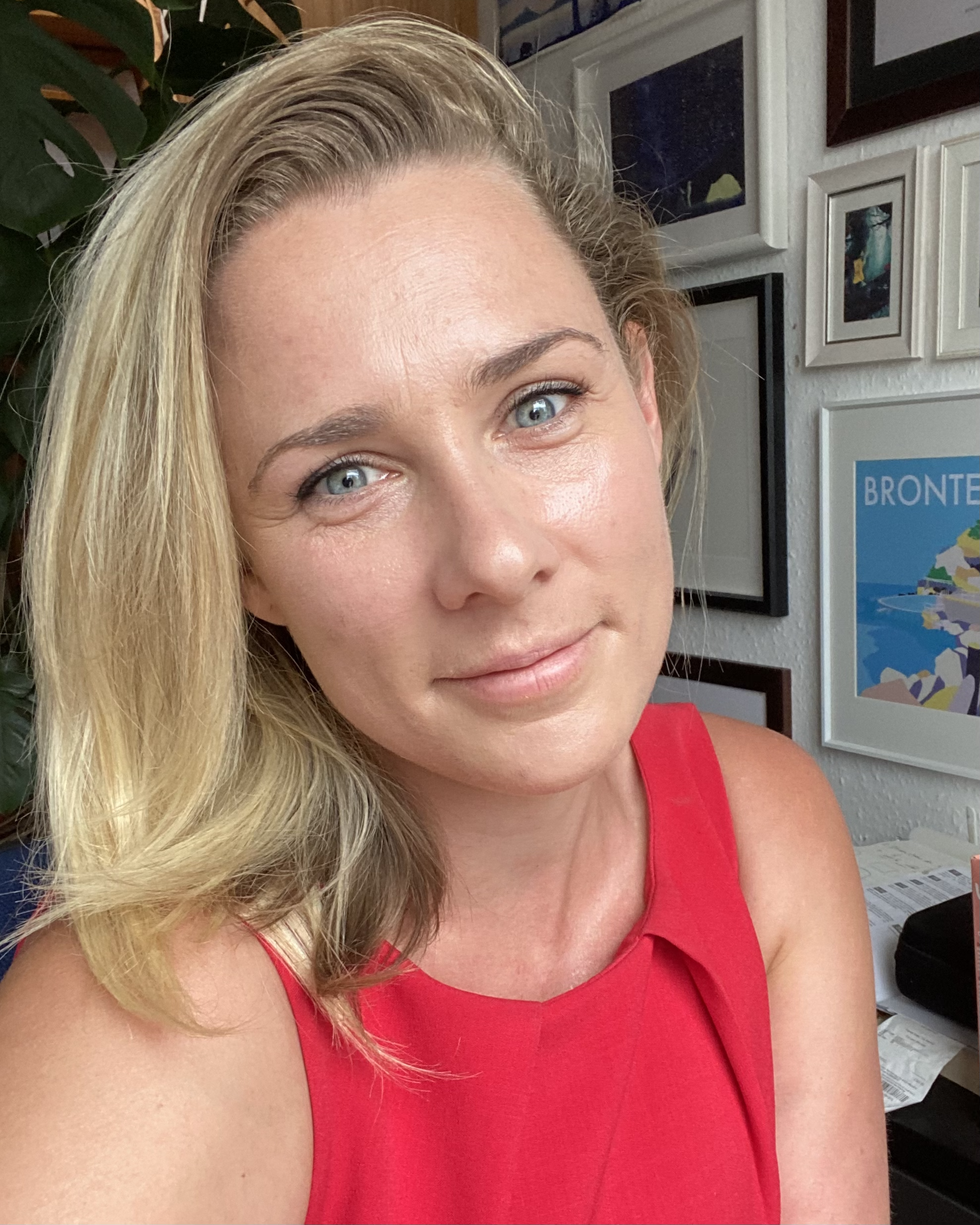
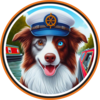


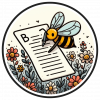
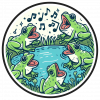










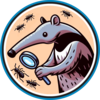







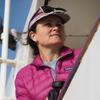




































































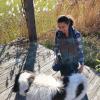














































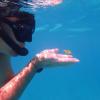



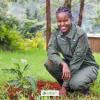

































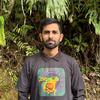



















Stephanie O'Donnell commented on " Is there a good resource for learning bird calls?"